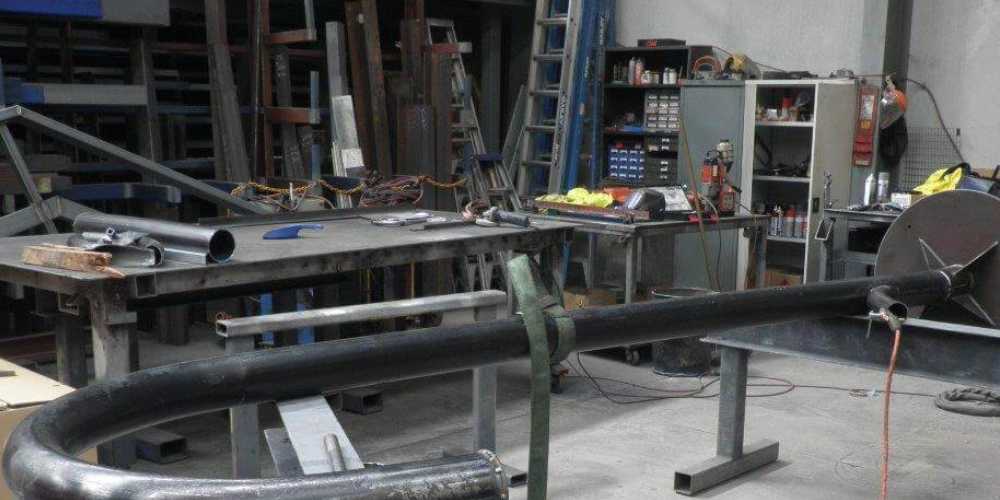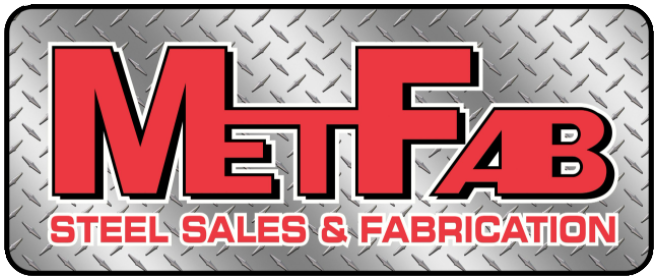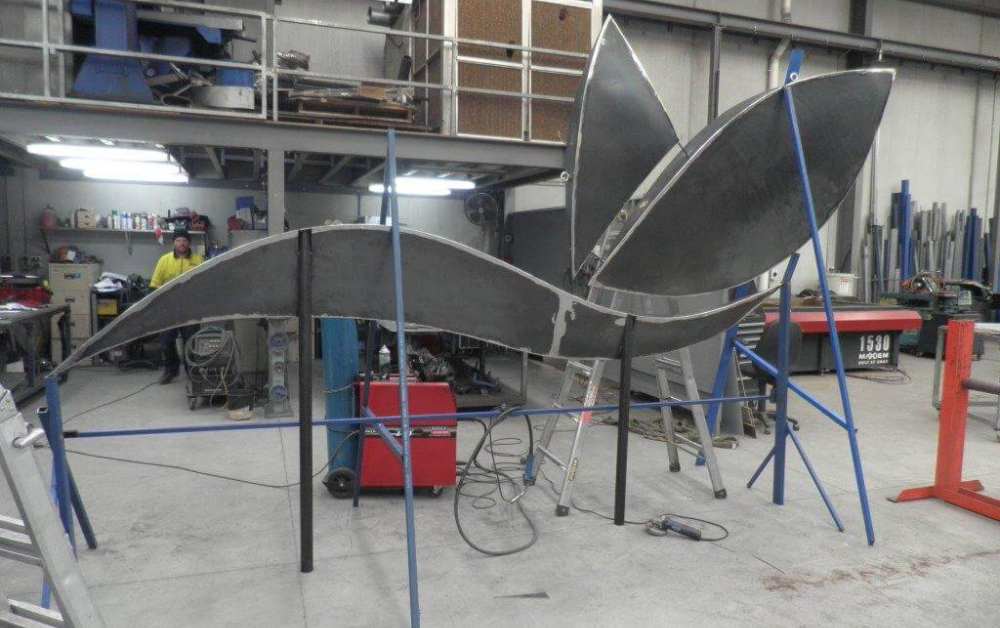Metal Fabrication- Everything You Need To Know
Metal fabrication may sound complicated and technical, but it plays an important part in our daily lives. It impacts practically every area of our daily lives, from the car we drive to the kitchen utensils we use.
Whether you like it or not, the fascinating process of shaping and manipulating metal materials surrounds us and creates a big impact on how modern our world is today. The allure of this intricate craft has inspired people on a journey of passion, making metal fabrication a fascinating and rewarding career to pursue. Talented metal fabricators pour their creativity, skill, and dedication into transforming raw metal into works of functional art, pushing the boundaries of what is possible.
What is metal fabrication, then? Curious to know more? Keep reading and find more valuable information about the world of metal fabrication in this blog we prepared for you!
What is Metal Fabrication
"Metal fabrication" is the process of manufacturing items or structures out of metal material by cutting, bending, and assembling them. It is typically considered a value-added process since it entails assembling goods or structures from raw metal.
Most objects you interact with, from your MacBook to your car to your furniture, have gone through the metal manufacturing process in some form. Several metal fabrication procedures and machines are available to transform metal into any possible item of any scale and shape.
Types of Metal Fabrication
Industrial
Industrial metal fabrication involves producing specialized parts and components for machinery and equipment used in industrial operations. Skilled fabricators use modern processes, such as CNC machining, to make accurate and complicated parts that suit the severe standards of industrial applications. This enables effective and dependable functioning in a variety of industrial environments.
Aerospace, alternative energy, material handling, pollution engineering, water treatment, automotive, and other sectors are common consumers for industrial fabricators. Their goods are often huge in scale and frequently comprise tanks, silos, and heavy machine components.
Commercial
Commercial metal fabrication involves producing metal items for commercial and consumer applications. From useful restaurant cooking equipment to visually appealing retail fixtures and decorative features, commercial metal fabricators collaborate with customers to turn ideas into real and aesthetically acceptable products. The focus is not just on functioning but also on improving overall visual appeal.
Commercial metal components are often smaller and more accurate than structural and industrial metal parts. However, they are equally vital to how a business company runs functionally and keeps staff and customers safe.
Structural
The fabrication of large-scale metal frames that serve as the foundation for buildings, bridges, and other infrastructure projects is known as structural metal fabrication. These fabricators create and assemble heavy-duty metal components, guaranteeing that the finished structures can withstand significant pressures and extreme weather conditions. Safety and precision are critical since manufacturing faults might jeopardize these massive constructions' structural integrity.
Uses of Metal Fabrication
Metal fabrication is a flexible technique that is used in a wide range of businesses and sectors. Here are some of the most important applications for metal fabrication:
Manufacturing and Industrial Equipment
Metal fabrication is widely used to create machinery and industrial equipment components and parts. Metal fabrication assures the smooth operation and efficiency of many industrial operations, from delicate gears and shafts to massive structural pieces.
Infrastructure and Construction
Metal fabrication is essential in the construction sector to manufacture frames for buildings, bridges, and other infrastructure projects. It entails creating structural components like beams, columns, and trusses that offer overall stability and support to the structure.
Automobile Industry
The automobile industry depends on metal fabrication to produce cars and all the parts that go into them. Manufacturing engine parts, chassis, body panels, and exhaust systems are a few examples of what is involved in this.
Aviation and Space
The aerospace and aviation sectors extensively make precision parts for airplanes and spacecraft using metal fabrication. Metal manufacturing guarantees the performance and safety of these vehicles, from the landing gear to fuselage components.
Technology and Electronics
Metal fabrication is used in the electronics industry to make equipment casings, brackets, and heat sinks. These parts support optimum performance by managing heat dissipation and safeguarding delicate electronics.
Commercial and Consumer Goods
A variety of consumer items and commercial goods are produced using metal fabrication. This includes furniture, art, signs, and appliances for kitchens and stores, all of which profit from metal production's durability and adaptability.
Renewable Resources and Energy
Turbines, generators, and transmission towers are just a few parts made for power plants using metal fabrication in the energy industry. Additionally, it contributes to manufacturing components for solar panel frames and wind turbine parts.
Healthcare and Medicine
Metal fabrication is a component of medical devices, equipment, and instrument production. Metal manufacturing guarantees accuracy and dependability in medical applications, from surgical instruments to diagnostic gadgets.
Military and Defense
Armored vehicles, weaponry, and other military gear manufacturers depend on metal fabrication, which is crucial in defense and military applications.
Customized Work and Projects
The use of metal for creative and customized projects also includes the creation of sculptures, decorative items, and architectural components that combine practicality with aesthetic appeal.

Most Common Metal Fabrication Process
The most common metal production process contains numerous essential processes from the early design phase through the final assembly of the finished product. While the particular techniques and equipment used may vary based on the intricacy of the project and the materials used, the overall metal fabrication process typically consist of the following steps:
Planning and Design
Material Selection
Choosing the right metal for the job is critical. Steel, aluminium, stainless steel, and copper are common metals used in manufacturing, each with distinct qualities suitable to specific uses. Material selection considers strength, weight, corrosion resistance, and cost.
Cutting
When the design and material are verified, the metal sheets or plates are cut to the desired size and form. Cutting technologies such as sawing, shearing, laser, plasma, or waterjet cutting depends on the material's thickness and the design's intricacy.
Shaping & Forming
The next step is to mold and shape the metal into the desired shape. Bending, rolling, and stamping techniques create certain angles and curves as the design specifies.
Welding and Joining
Welding is a fundamental metal manufacturing technique that combines two or more metal parts. Depending on the material and project criteria, several welding procedures are used, such as MIG (Metal Inert Gas), TIG (Tungsten Inert Gas), and arc welding.
Machining
Machining is performed on metal components to produce high accuracy and precise details. Cutting tools, lathes, and milling machines remove material and produce complicated forms and holes throughout this procedure.
Finishing and Surface Treatment
After component manufacture and assembly, the metal product is surface treated to improve its look and function. Finishing methods such as sanding, polishing, painting, powder coating, or galvanizing depend on the intended output.
Quality Assurance
Quality control procedures are applied throughout manufacturing to ensure the product meets relevant standards and tolerances. Inspections and testing are performed at various stages to discover and correct problems.
Integration and Assembly
All individual produced components are combined and incorporated into the completed product in the final phase. Additional welding, fastening, or joining processes may be required to make a smooth and functioning metal product.
FREQUENTLY ASKED QUESTIONS
Conclusion
So there you have it! Metal fabrication is the driving force behind many items we use and see daily. Metal fabrication is a major part of our lives, from the smallest nuts and bolts to the largest skyscrapers.
Consider all the great things technology makes possible:
- The equipment that keeps businesses running smoothly.
- Our houses have modern, practical designs.
- The dependable buildings that make up our cities.
It's similar to the magic that transforms basic metal into something remarkable and helpful!
Metal fabrication is flexible and adaptable; it can create one-of-a-kind prototypes or produce items in small numbers. Therefore, metal fabrication has your back if you have a crazy idea for a metal creation.


